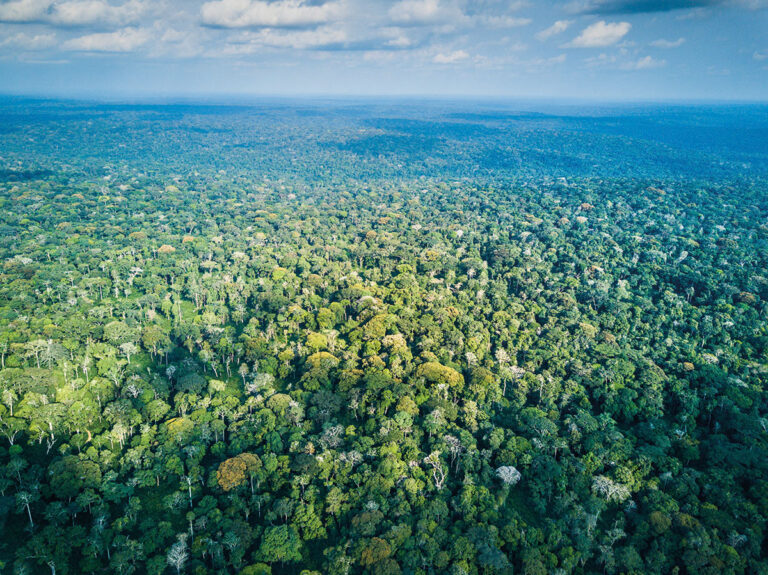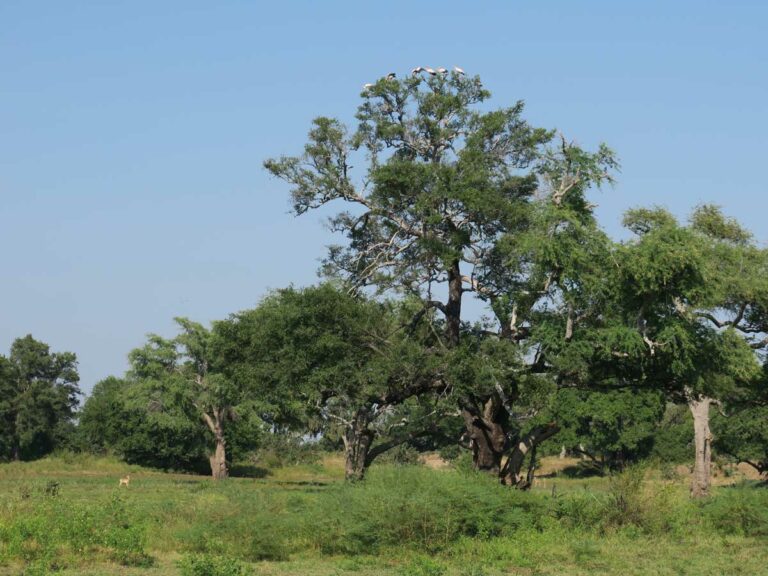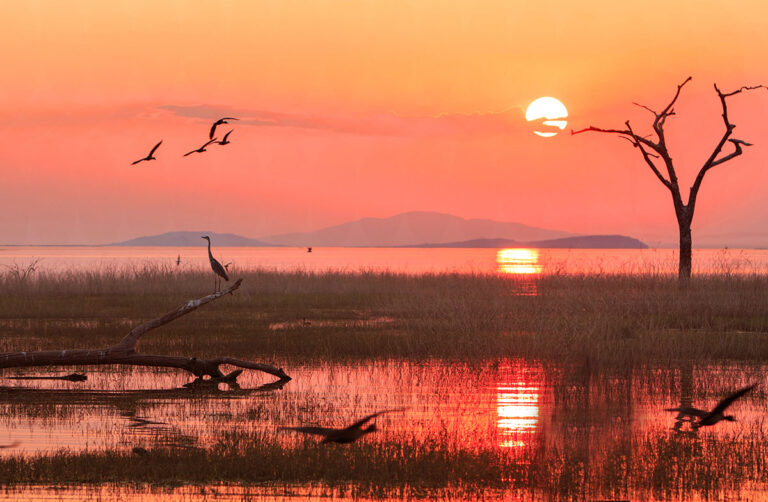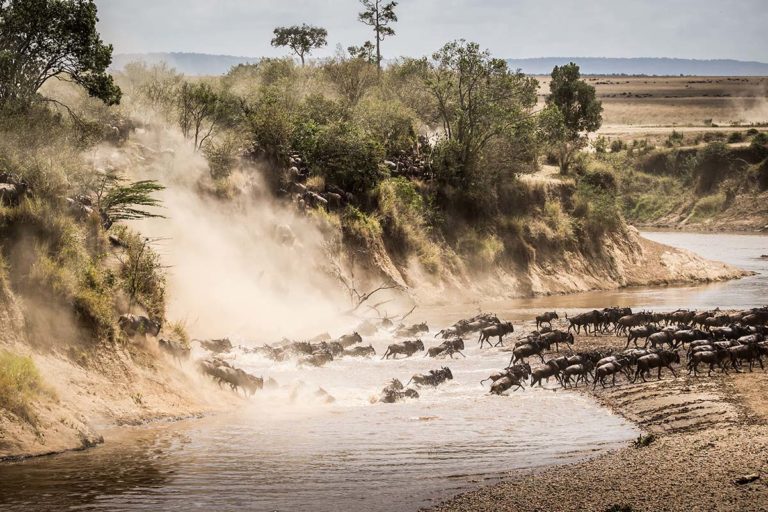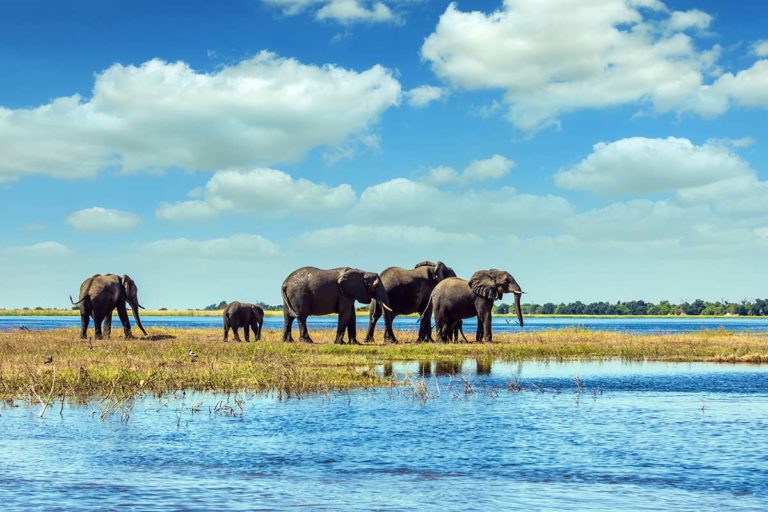Rediscovering Zimbabwe
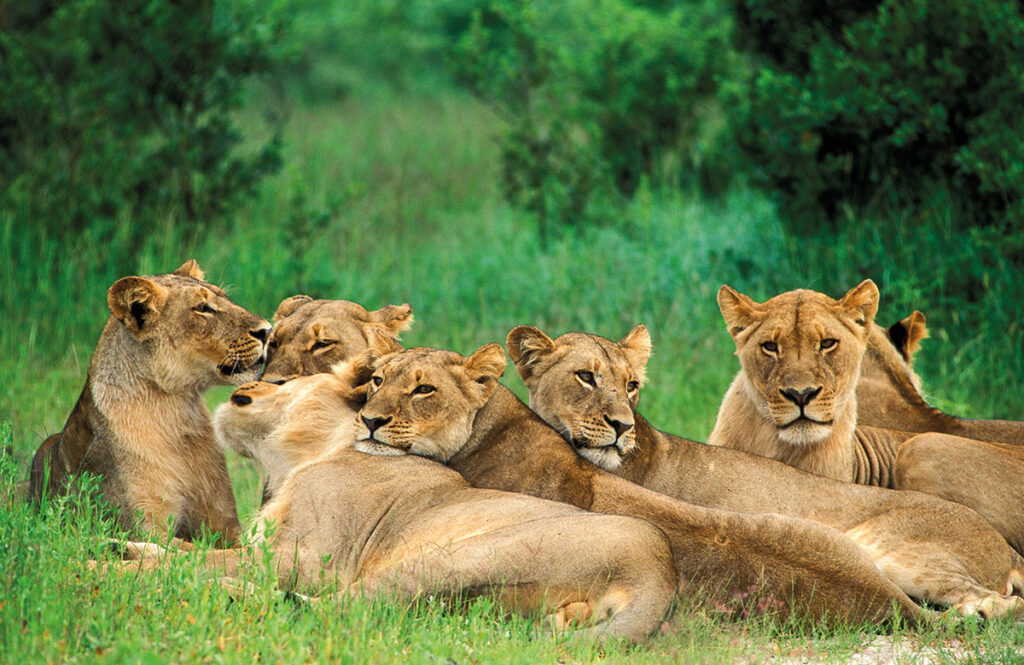
In early 2023, in the run-up to elections, seasoned African traveller and guidebook writer Phillip Briggs and his photographer wife Ariadne van Zandbergen returned to Zimbabwe, spending six weeks driving the length and breadth of the country to see what it is really like to travel round right now. Here, he describes 10 personal highlights from this trip, and addresses some of the practical issues that may still concern potential visitors.
Zimbabwe should, by rights, be one of Africa’s top tourist destinations. And — easy to forget today — for a few years in the 1990s that’s exactly what it was. Adrenaline junkies flocked to Victoria Falls to raft the white waters of the Zambezi and bungee jump from its historic bridge. Safari enthusiasts enjoyed world-class wildlife viewing in the likes of Hwange and Mana Pools. A plethora of scenic highlights, headed by the peerless Victoria Falls, was complemented by a tangible cultural heritage that included the monumental ruined city of Great Zimbabwe and some breathtaking prehistoric rock art sites.
Boosted by tourist amenities that catered to every corner of the market, and one of Africa’s highest literacy and education levels, Zimbabwe back then was positively pumping, and it felt like a country with the rosiest of futures.
A quarter century of political and economic turmoil now separates us from those halcyon days. Having been regular visitors to Zimbabwe back in its heyday, Ariadne and I returned earlier this year on a six-week self-drive trip, to experience a country that seems ideally poised to continue its tourist revival.
The likes of Victoria Falls, Hwange and Great Zimbabwe are as alluring as ever. The travel infrastructure is still in unexpectedly good shape. And, at risk of generalisation, the people of Zimbabwe, despite all they’ve had to contend with, remain as welcoming and articulate as ever. So, what were the highlights from our trip?
Sunrise over Victoria Falls
You’d be crazy to visit Zimbabwe and not make the effort to see Victoria Falls. Known as Mosi-oa-Tunya (‘The smoke that thunders’) in the local Lozi language, this raging mile-wide waterfall constitutes the world’s largest sheet of falling water, and thoroughly deserves its spot as the sole African representative in the official Seven Wonders of the Natural World. But there is one catch. As is so often the case with headline tourist attractions, Victoria Falls at peak hours can become overrun with selfie junkies. To avoid the crowds, we set the alarm early and headed to the entrance gate at opening time. And it was well worth skipping breakfast to experience the Thundering Smoke in this near pristine state. Watching the sun rise behind the explosive main falls, tinting the sky several shades of orange, is an unforgettable sight. Better still, for a good 30 minutes after we arrived, we wandered along the cobbled paths that connect the spray-soaked viewpoints with barely another tourist in sight.
Exploring the forgotten Khami Ruins
Situated within easy day-tripping distance of Zimbabwe’s second city Bulawayo, Khami is often overlooked in favour of the larger stone ruins at Great Zimbabwe. But a visit to this little-known site, which sprawls attractively across a hilly stand of thick miombo woodland, is thoroughly worthwhile — and made doubly enjoyable by the fact you’re likely to have it to yourself.
The highlight of Khami is the prosaically-named Main Platform, a former royal residence comprising nine terraces and a maze of passageways where our only companions were a few vervet monkeys scampering playfully on the rocks. Although Khami is far smaller in scale than Great Zimbabwe, the drystone walls here feature a more complex variety of checkerboard, herringbone and other decorative patterns.
Not far from Main Platform is a Dominican Cross reputedly set in place by the Portuguese warlord Sisnando Dias Bayão, who led a 1644 expedition into present-day Zimbabwe to locate the source of its gold, and might well have been responsible for the destruction and abandonment of Khami. As with Great Zimbabwe, the site museum is more worthwhile than its modest proportions suggest — artefacts unearthed during excavations include a unique ceramic pot that resembles a headless hippo.
A lunch stop at the vulture restaurant
It doesn’t sound particularly tempting, does it? But the vulture restaurant at Victoria Falls Safari Lodge turned out to be an unexpected highlight of our time in Zimbabwe. Every day, at 1pm, meat offcuts and scraps from the lodge restaurant are placed at a feeding spot that attracts large flocks of hungry white-backed and other vultures.
Far from being gimmicky, the vulture restaurant represents an important conservation effort. All Africa’s vulture species are now listed as endangered, and maintaining a fixed feeding spot helps discourage them from roaming outside conservation areas and eating poisoned meat left out by farmers. It’s also a genuinely educational experience. Vultures are not the most superficially lovable of creatures, but the informative talk given before they are fed emphasises the vital ecological role played by these and other scavengers by clearing the bush of rotting carcasses and associated diseases.
Admirably, Victoria Falls Safari Lodge doesn’t charge outsiders for the vulture experience. However, we lingered on to enjoy a pizza at the terrace restaurant, which overlooks a waterhole that attracts a steady stream of wildlife from neighbouring Zambezi National Park.
Gathering elephants in Hwange
One of Africa’s truly great safari destinations, Hwange is Zimbabwe’s largest national park and home to an exceptional diversity of wildlife. Highlights of the several days we spent there included a super-chilled cheetah with cubs on the prowl in the Bomani concession, a face-off between a lion pride and elephant herd near Nehimba, and tracking newly-reintroduced rhinos on foot in the community-owned Ngamo Wildlife Sanctuary.Where Hwange really excels, however, is the staggering number of elephants — currently estimated at around 50,000 — that congregate around its waterholes in the dry season. We were lucky enough to witness one such pachydermal gathering at Verney’s Camp, which overlooks a pumped pan that attracted perhaps 500 elephants over the course of an afternoon. The playful interaction between the different herds kept us so entertained that we sat there all afternoon without bothering to go on a game drive.
Boulders and rock art of Matobo Hills
The granite domes, giant whalebacks and improbable balancing rock formations that characterise many parts of Zimbabwe reach their apex in Matobo, an Ndebele name that means ‘Bald heads’. The most striking rock formation we saw here is the so-called Mother and Child, which resembles a woman carrying a baby on her back, with a top-heavy head that looks like it’s one tiny gust away from decapitation.
A better-known landmark included on pretty much all visits is the grave of that arch-imperialist Cecil John Rhodes. This rests within a ring of giant boulders at the summit of a vast whaleback called Malindidzimu (a local Kalanga name meaning ‘Hill of ancestral spirits’) and offers spectacular views over the surrounding hills.
Scenery aside, our two main highlights of Matobo were tracking white rhinos on foot (we got within a few metres of these imposing creatures, which are bulkier than any terrestrial mammal other than elephants), and visits to several prehistoric rock art sites including Nswatugi Cave, which houses a complex panel of superimposed paintings dominated by some outstanding figures of running giraffes.
Stepping back in time at Great Zimbabwe
At risk of being dictatorial, Great Zimbabwe really should be on everybody’s African travel wish list. This imposing stone city, which supported 20,000 inhabitants in its mediaeval heyday, prospered at a time when up to a quarter of the world’s gold supply was mined by its Shona constructors, then transported along the Zambezi and Save valleys to coastal trade emporiums such as Sofala and Kilwa.
I’d already visited Great Zimbabwe a couple of times in the 1980s and ‘90s, and returning a quarter of a century later it was every bit as atmospheric as I remembered. Most spectacular is the oval Great Enclosure, whose mortar-free stone walls possess the largest footprint of any ancient structure in subequatorial Africa, and enclose a mysterious 10m-high Conical Tower (pictured above). Elsewhere, we took childlike pleasure in exploring the sprawling passages and platforms of the labyrinthine Hill Complex, which is the oldest part of the city, dating back at least 1000 years.
Drop into the site museum to place Great Zimbabwe in its historical context, which — despite voluminous colonial-era wittering to the contrary — had absolutely nothing to do with the Queen of Sheba, or King Solomon, or the Ancient Egyptians, or any other alien constructors. The museum also houses a wealth of artefacts unearthed at the site, most notably the iconic soapstone bird statues that are now the national symbol of Zimbabwe.
Harare’s superb Shona Sculpture Gallery
Newsweek magazine has called Shona sculpture “the most important art form to emerge from Africa in the 20th century”. Rooted in an ancient heritage epitomised by the famous soapstone birds of Great Zimbabwe, this distinctively Zimbabwean genre explores traditional Shona spiritual themes through a filter of contemporary surrealism. The sculptors like to use mineral-rich serpentinite rocks extracted from the Great Dyke and their work tends to complement and highlight the rock’s natural grains and colours.
Of all the galleries we visited during our trip, none compare to the Shona Sculpture Gallery, set in a manicured garden in Harare’s southern suburbs. We were blown away by the variety and quality of work on display, representing first-generation pioneers such as Edward Chiawa and John Takawira, who emerged in the 1950s, as well as many of their younger heirs. Although the gallery is aimed at serious collectors, with price tags that reflect this, casual visitors are welcome and the guides — all sculptors in their own right — are very passionate and friendly.
Off-the-beaten-track wanderings in the Eastern Highlands
Zimbabwe’s Eastern Highlands is often neglected by safarigoers. But this scenic region offers multitudes to hikers, birdwatchers and other outdoor enthusiasts. The magnificent granite domes that grace Nyanga National Park are a kind of high-altitude equivalent to the better known Matobo Hills, while the Vumba Massif outside the sleepy town of Mutare is probably the most reliable site in southern Africa for spotting samango monkey, along with localised highland birds such as silvery-cheeked hornbill, Swynnerton’s robin-chat, Gurney’s sugarbird, Robert’s prinia and Chirinda apalis. For us, an unexpected scenic highlight was the 762m-tall Mutarazi Falls. This little-known waterfall ranks as the second-tallest in Africa, and stands 17th on the global list. For adrenaline junkies, it is also the site of an exciting skywalk and zipline.
Sundowners on the world’s largest manmade lake
Not content with being southern Africa’s longest river and home to the world’s most spectacular waterfall, the Zambezi can also lay claim to feeding the largest manmade lake on Earth. This is Kariba, which came into being in the late 1950s after a hydroelectric dam was built to span the eponymous gorge.
We were fortunate enough to take a motorboat across Lake Kariba to Matusadona National Park, an underrated safari destination where we had excellent sightings of lion, elephant and buffalo. But our top Matusadona highlight was undoubtedly a sunset cruise on the lake. As the sun set behind a photogenic forest of dead trees in the shallows, we heard African fish eagles calling overhead while elephants drank on the shore and hippos emerged from the water to start their nocturnal foraging. And what more appropriate way to celebrate this magical moment than by cracking open a cold Zambezi — not only the name of the river that feeds Kariba, but also Zimbabwe’s national beer!
Guided game walks in some of Africa’s wildest parks
There’s no more exciting or immediate way to experience Africa’s wildlife than tracking it on foot with a knowledgeable local guide. And Zimbabwe places an unusually strong emphasis on walking safaris, which can be conducted by any qualified professional guide in any of its national parks. During the course of our time in Zimbabwe, we enjoyed sensational guided walks below the burnished Chilojo Cliffs of Gonarezhou and along the Matusadona lakeshore. But we were particularly excited to head out on foot in Mana Pools National Park, a UNESCO World Heritage Site that protects a stretch of the Zambezi floodplain renowned for its high wildlife densities in the dry season. Animals seem so much larger when you’re on foot: coming face-to-face with an elephant, buffalo or hippo is at once humbling and a genuine adrenaline booster, but we also enjoyed more tranquil encounters with the likes of eland, kudu and zebra.
Reality check
Tell people you plan to visit Zimbabwe, or have recently been there, and you’ll soon realise how negatively this wonderful country is still perceived by outsiders. To be fair, we also approached our 2023 trip with a certain degree of trepidation after 20 years’ absence. So, it is worth examining a few common misapprehensions about Zimbabwe to assess how well founded they actually are:
Roadblocks and corrupt cops make self-driving a nightmare
This may have been a concern a few years back, but it’s not something you need to worry about today. Over the course of driving some 5,000km, we were only stopped twice, and in both cases we were detained for no more than a minute or two while the officer asked politely to see the driver’s license then waved us on. Every self-driver we spoke to had a similar experience.
They’ve poached all the wildlife
Nonsense. Wildlife is plentiful in all the main parks, and numbers are growing in the once-neglected likes of Gonarezhou and Matusadona, which are now managed in partnership with respected international conservation agencies. For perspective, Zimbabwe’s estimated population of 80-85,000 elephants is the world’s second highest after Botswana and represents almost 20 per cent of the continental total.
Main roads are appalling
Yes and no. Zimbabweans are the first to lament the deterioration of their roads, and there are stretches of certain trunk routes — Harare to Kariba, for instance, or Bulawayo to Victoria Falls — that should be driven slowly and with extreme caution due to a combination of gaping potholes, ragged verges and trucks hurtling in the opposite direction. That said, in a broader African context, most other roads in Zimbabwe remain pretty stress-free, provided you’re not overambitious about the distance you try to cover in a day.
It’s an economic shambles
In many respects, that’s true. Power cuts are frequent, urban water supplies are erratic, unemployment is rife, and the long queues outside Western Union outlets indicate an unhealthy economic dependence on cash from relatives working abroad. Even so, while life in Zimbabwe is undoubtedly tough, there’s no sense of imminent collapse. The towns are positively bustling with economic activity: shops of all descriptions are well stocked, fuel is usually readily available, there’s a local take-away, restaurant or bar on every other street corner, and the informal economy is absolutely thriving. Moreover, whatever hardships Zimbabwe is experiencing, tourism is a contributor to the economy, so there’s no reason to let it deter you from visiting.
It’s dangerous
The headline-grabbing farm invasions of the early 2000s have left many outsiders with the enduring impression that Zimbabwe is unsafe and a hotbed of anti-white sentiment. But this violence peaked 20 years ago and was always related to a specific set of circumstances as opposed to being representative of general racial attitudes. Zimbabwe today is emphatically a safe travel destination, violent crime against tourists is rare, and the general mood is conspicuously friendly and welcoming.
Inspired by this article from issue 102? For more helpful advice and expert tips, why not pick up a copy of this issue today, or subscribe to Travel Africa by clicking here. Image credit Ariadne Van Zandbergen, The Africa Image Library, 2023
Other recent articles
The green heart: trees of life
Where to look?
Zimbabwe highlights
Circuit breaks
25 Reasons to visit Kenya
Botswana itineraries
Subscribe
Never miss an issue of Travel Africa
To ensure you get your regular Africa fix, subscribe to have each issue of Travel Africa delivered directly to you as soon as it is published (four times a year). Choose from print+digital or digital-only options, to suit your preferred reading style. Renewals and gift options are also available.
Join our Shamwari gnusletter
Sign up to receive additional content, news and travel tips by email. Your address will be used only for this purpose and you can unsubscribe at any time.
By using this form you agree that you have read our Privacy Policy

